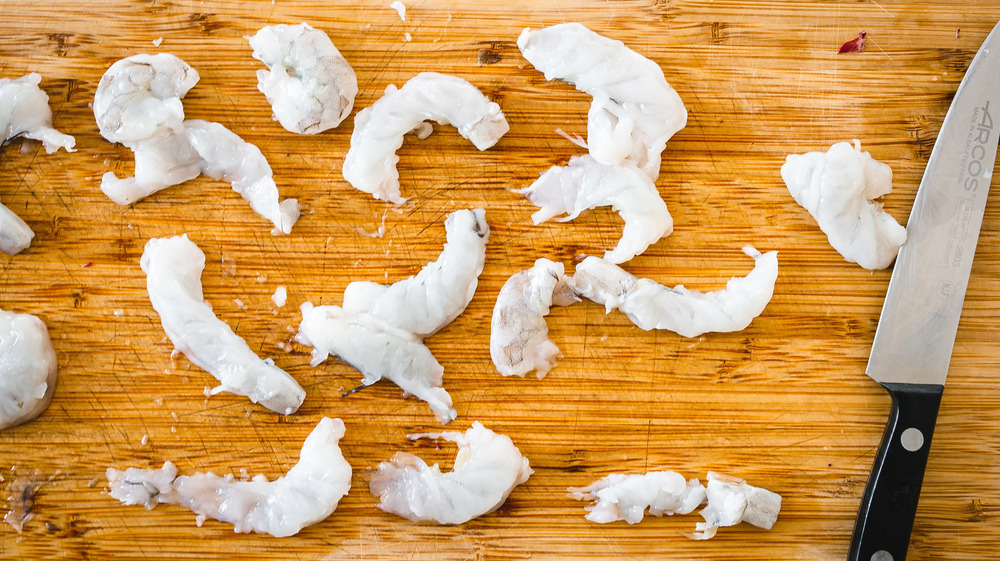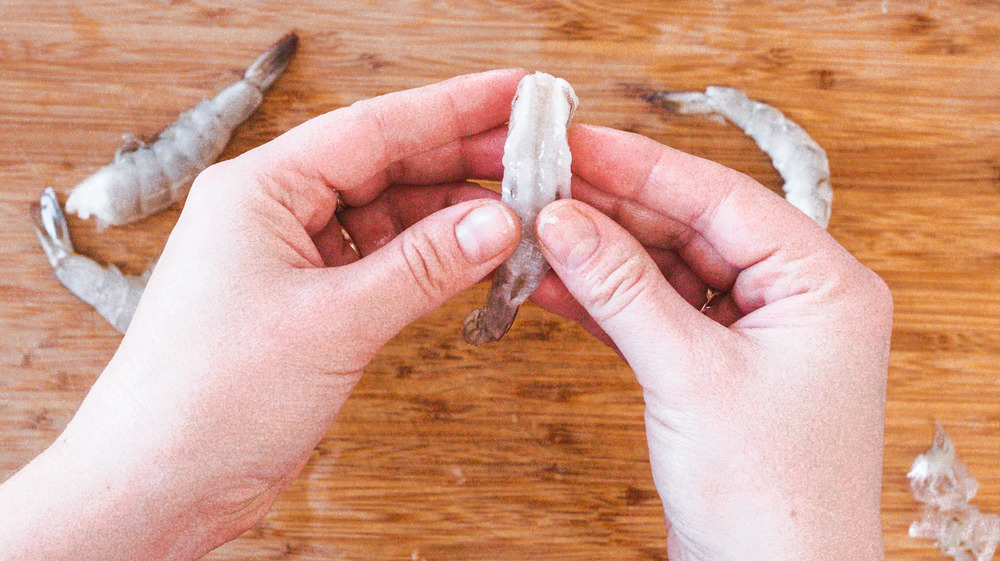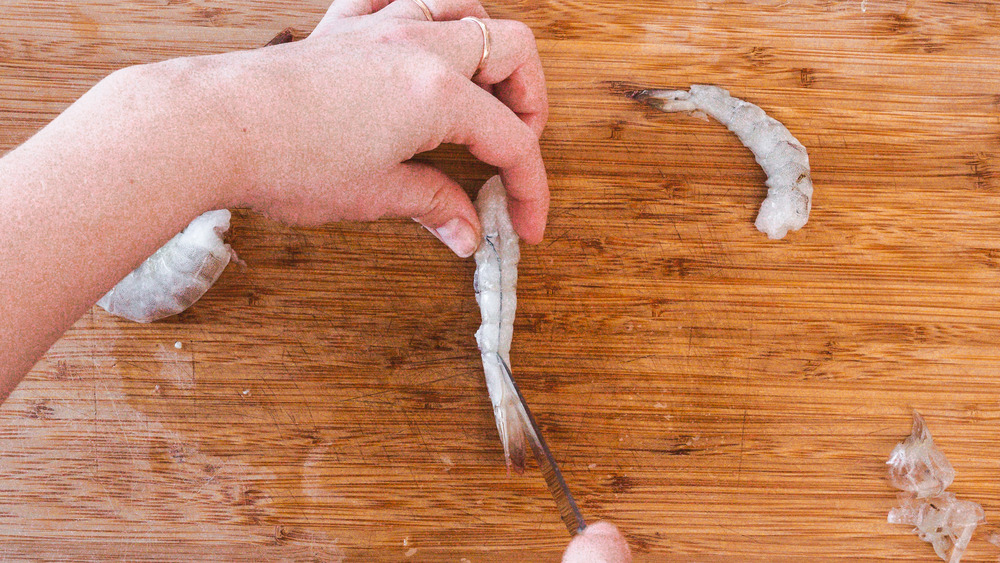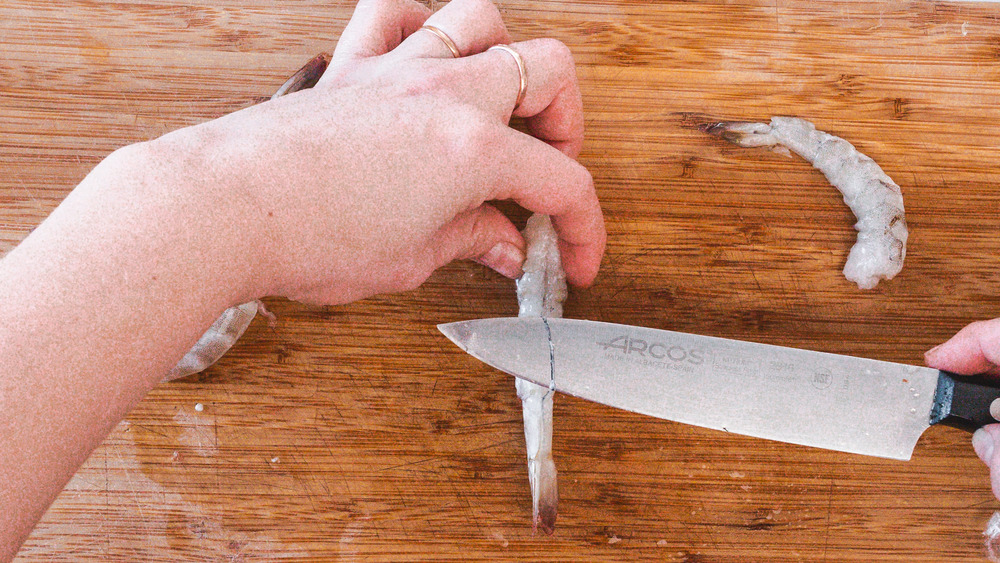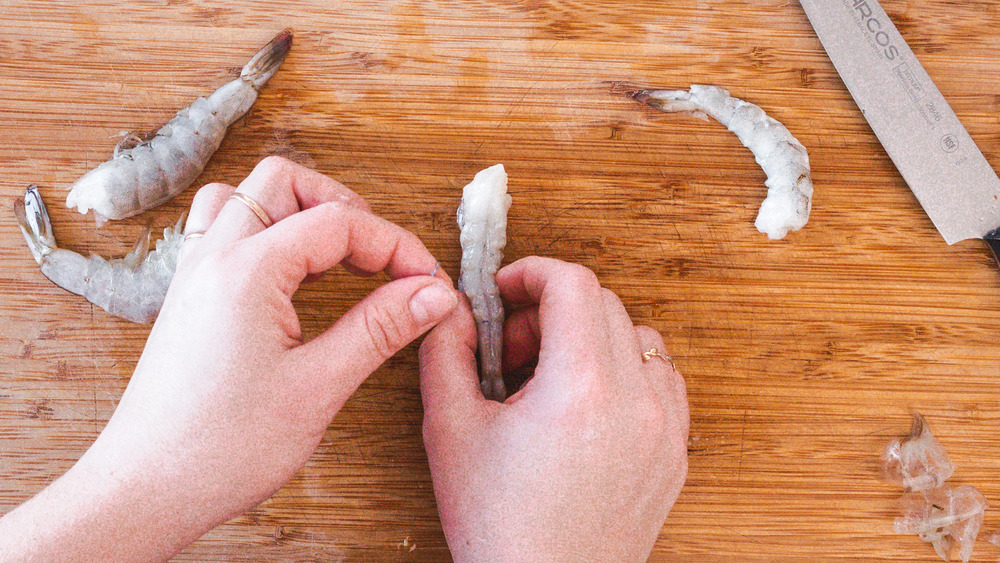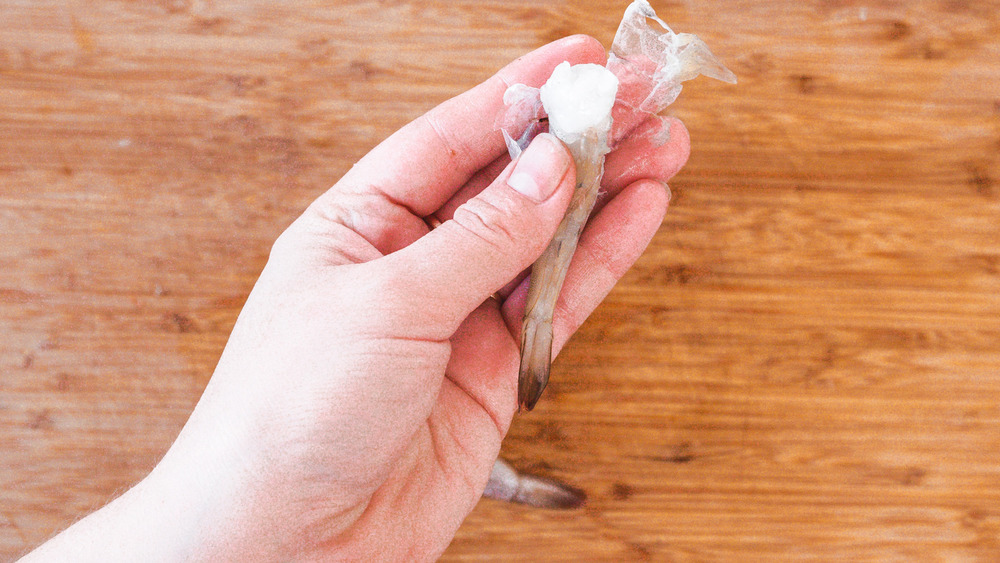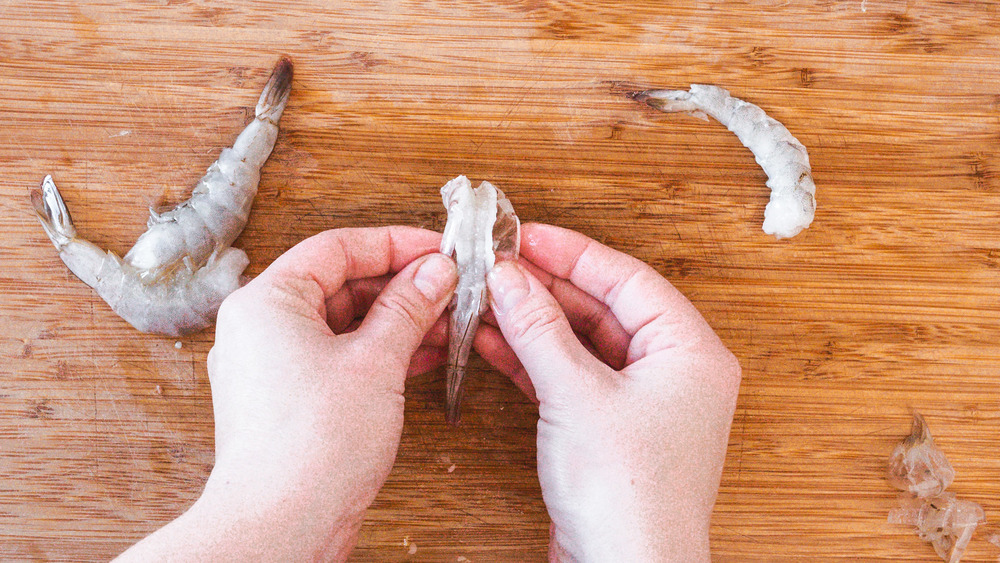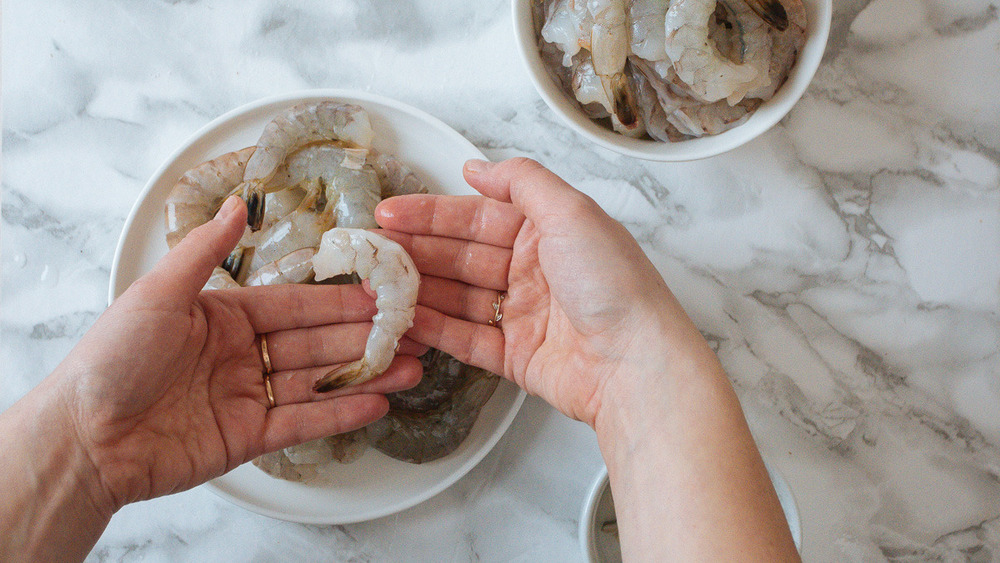How To Clean Shrimp
Cleaning shrimp may sound complicated, but when it's the only thing standing before you and a plate of pristine, perfectly cooked shrimp, then it becomes a no-brainer, says food blogger & photographer Ksenia Prints of At the Immigrant's Table.
Cleaning shrimp simply means getting rid of the shrimp's intestines. Like the digestive tracts of most of us, shrimp hold remnants of everything they eat in their intestines. This translates to sand, grit, and other less-glamorous souvenirs of sea life than that dried coral your aunt brought you back from the Bahamas. If that doesn't sound very appetizing, that's because it really isn't.
Cleaning shrimp is nothing more than a matter of snipping out one very thin vein. Though it may seem finicky, it's often what separates a plate of acceptable shrimp from the divine, so why not learn how to do it? Follow our easy guide on how to clean shrimp, and never again be confused by what it means to devein shrimp.
Is it necessary to devein shrimp?
Deveining shrimp refers to cutting out the shrimp's digestive tract, a little black vein running along the shrimp's back. When dealing with very small shrimp, it is highly unlikely you would even notice the vein. But if you're looking for absolute certainty as to the cleanliness of what you're eating, we do recommend you check for that vein — it only takes a few seconds.
With large prawns, deveining shrimp becomes truly important. In that case, the vein can become much thicker and more pronounced, and its taste can really spoil your dish, especially if it's something as delicate as a shrimp cocktail. So for your peace of mind, you should probably devein all large shrimp.
Make a cut along the shrimp's back
First, you'll peel your shrimp. Then, to reveal the shrimp's vein, using a small paring knife, make a slit along the outer edge of the shrimp's back. No need to push that knife in — we're really talking about just a quarter-inch-deep cut.
Slide your knife under the vein that runs along the shrimp's back
Once you pop your knife in, a black vein running along the back of the shrimp should become pretty visible. Slide a paring knife underneath the black vein, and pop it out with one clean movement. You can also take it out with your fingers.
If you can't easily see the vein, don't bother looking around for it. Sometimes, they are so fine that they are not easily visible, and then they're unlikely to cause any discomfort during eating. Other times, you may have gotten lucky and bought already-cleaned shrimp.
Repeat with all remaining shrimp
Continue making slits and popping out those veins until you run out of shrimp. There is no need to keep the shrimp veins — feel free to discard them.
What is the white stuff in shrimp?
Sometimes, you will open a bag of shrimp, and as you begin to go through them, you will notice some white "stuff" or growth on the heads or bodies of the shrimp. In most cases, this is a case of simple freezer burn. Don't worry about it, and proceed with the shrimp as you normally would. Clean, cook them and eat to your heart's desire! They are perfectly safe.
If, however, your shrimp was bought fresh and not frozen and the growth seems to have a smell, then it may be a case of shrimp that was left too long at an improper temperatures. If your shrimp smells, proceed as you would with any seafood and throw it out.
Is it okay to eat shrimp with freezer burn?
Freezer burn is the common name given to things that were improperly frozen or left in the freezer for too long. Freezer burn affects the taste, texture, and look of foods like shrimp, but it does not make them dangerous to eat.
That means that while your freezer-burnt shrimp may taste and look a bit differently than what you are used to, they are still perfectly safe to eat. Handle your shrimp properly, devein and clean them in the aforementioned easy steps, and there is no reason why you shouldn't be able to enjoy a whole array of delicious shrimp dishes, all in the comfort of your own home.
How to clean shrimp directions
Prep time: 1 minute
Cook time: 0
Servings: 1
Ingredients:
-
Shrimp
-
Paring knife
-
Cutting board
Directions:
-
After you peel your shrimp, make a ¼-inch-deep cut along the shrimp's back.
-
Slide your knife under the vein that runs along the shrimp's back. Cut or pull that black vein, and discard. There is no need to keep the veins. You can also pull them out using your fingers.
-
Repeat with all remaining shrimp. Keep shrimp on ice or in proper cold temperature until ready to cook.
